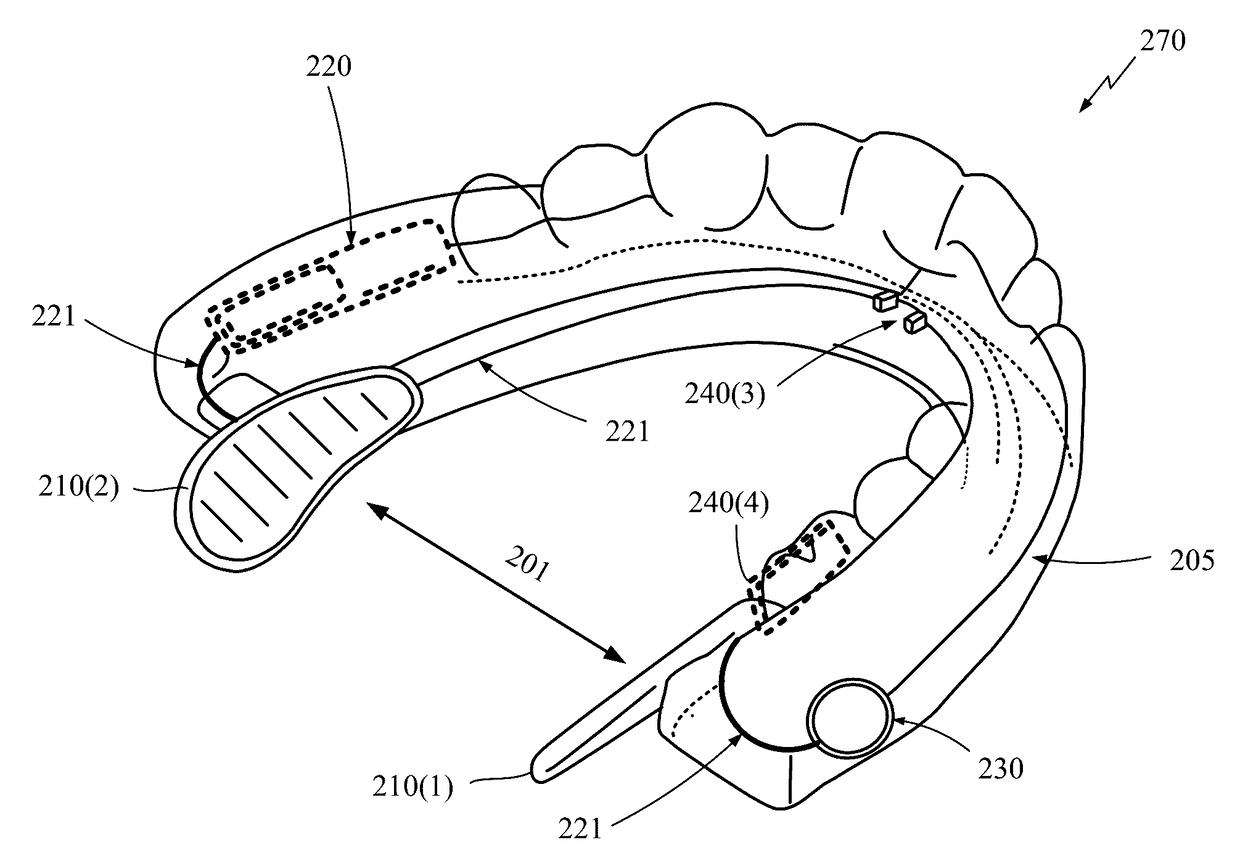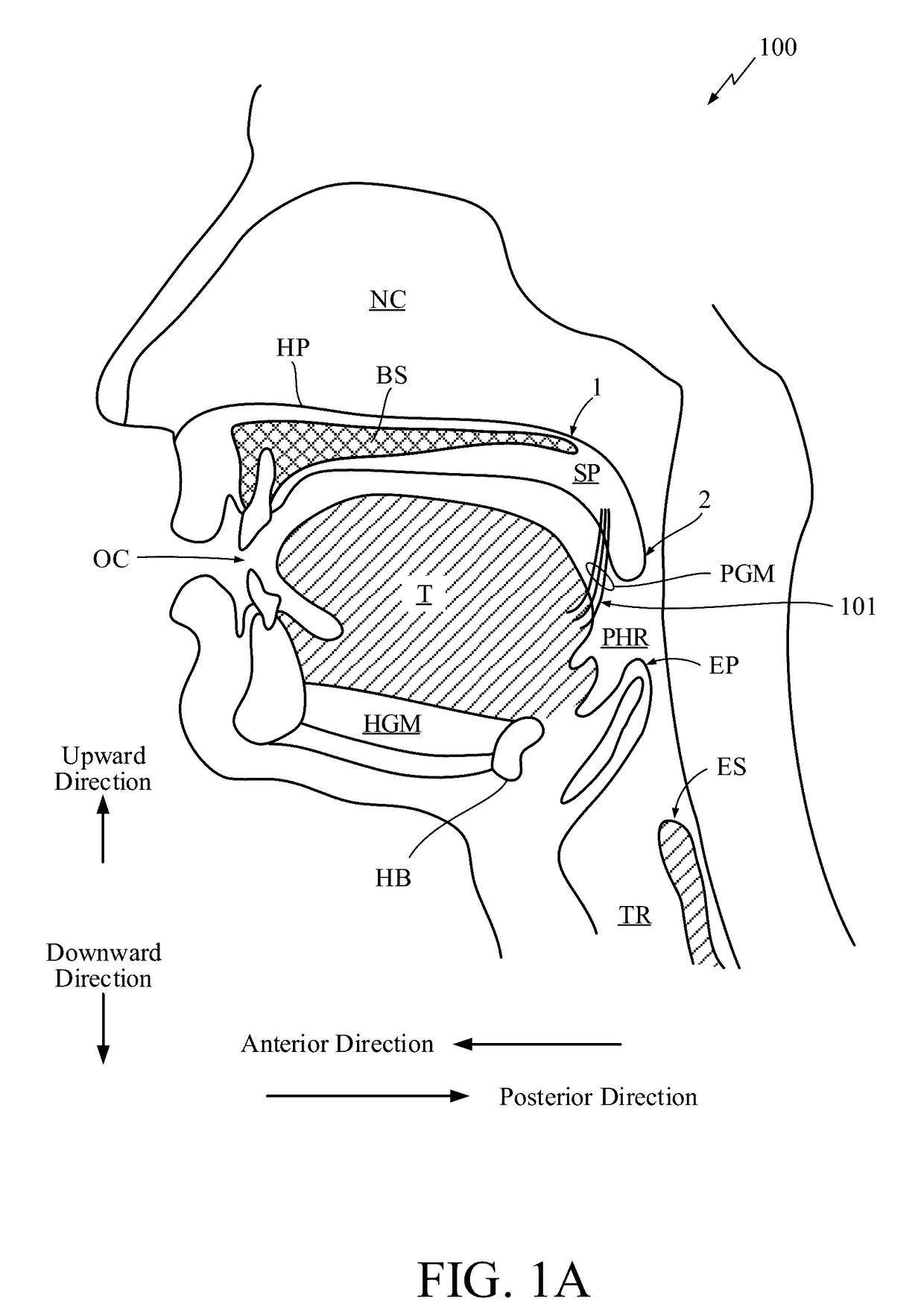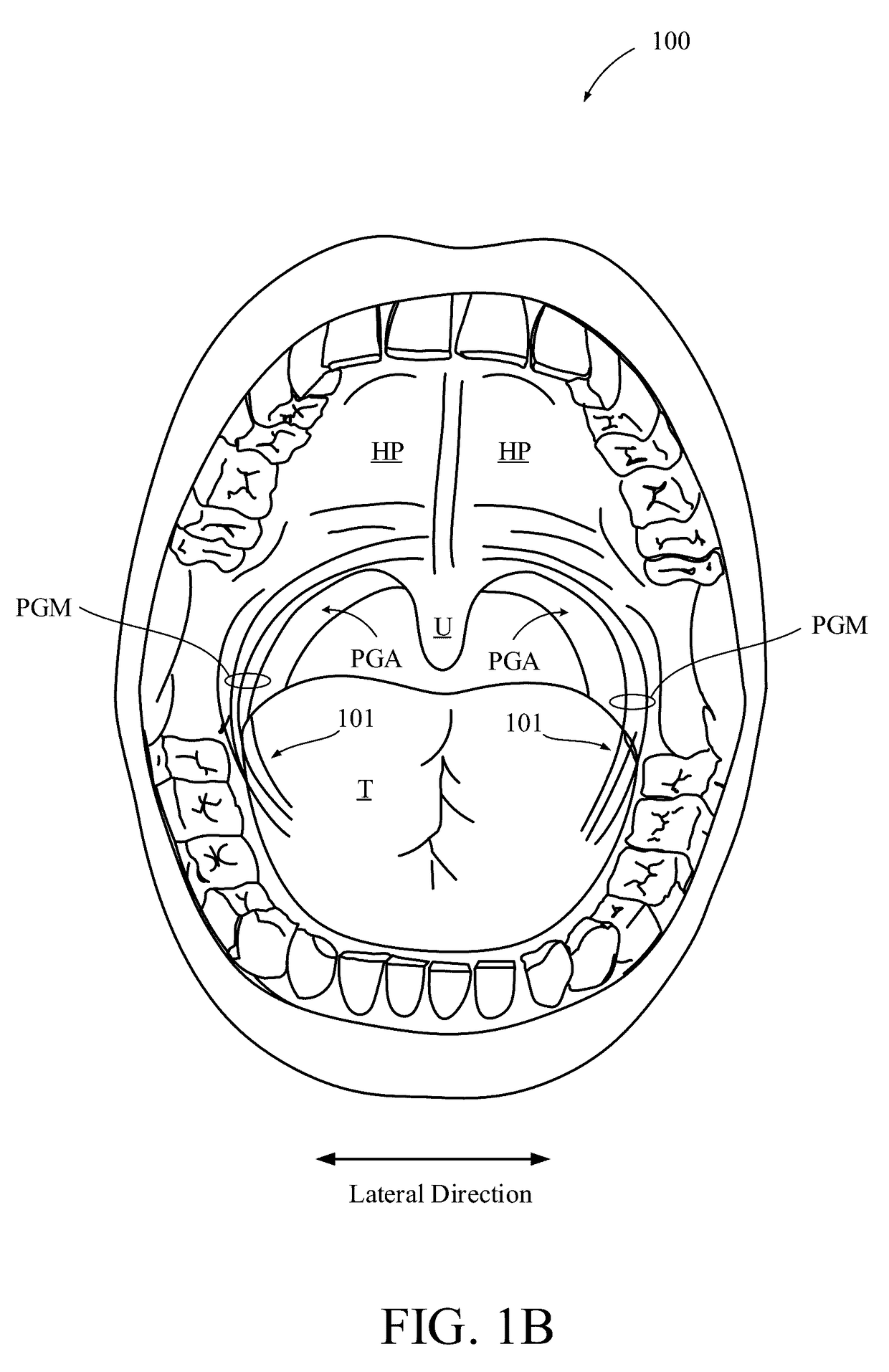Detecting and treating disordered breathing
a technology of disordered breathing and detection, applied in the field of disordered breathing, can solve the problems of sleep deprivation, daytime tiredness, malaise, etc., and achieve the effect of reducing the risk of death
- Summary
- Abstract
- Description
- Claims
- Application Information
AI Technical Summary
Benefits of technology
Problems solved by technology
Method used
Image
Examples
Embodiment Construction
[0045]A non-invasive method and apparatus for treating sleep disorders, such as obstructive sleep apnea (OSA) and / or snoring, are disclosed herein. In the following description, numerous specific details are set forth to provide a thorough understanding of the present disclosure. Also, in the following description and for purposes of explanation, specific nomenclature is set forth to provide a thorough understanding of the present embodiments. However, it will be apparent to one skilled in the art that these specific details may not be required to practice the present embodiments. In other instances, well-known circuits and devices are shown in block diagram form to avoid obscuring the present disclosure. The term “coupled” as used herein means connected directly to or connected through one or more intervening components, circuits, or physiological matter. Any of the signals provided over various buses described herein may be time-multiplexed with other signals and provided over one...
PUM
 Login to View More
Login to View More Abstract
Description
Claims
Application Information
 Login to View More
Login to View More - R&D
- Intellectual Property
- Life Sciences
- Materials
- Tech Scout
- Unparalleled Data Quality
- Higher Quality Content
- 60% Fewer Hallucinations
Browse by: Latest US Patents, China's latest patents, Technical Efficacy Thesaurus, Application Domain, Technology Topic, Popular Technical Reports.
© 2025 PatSnap. All rights reserved.Legal|Privacy policy|Modern Slavery Act Transparency Statement|Sitemap|About US| Contact US: help@patsnap.com



